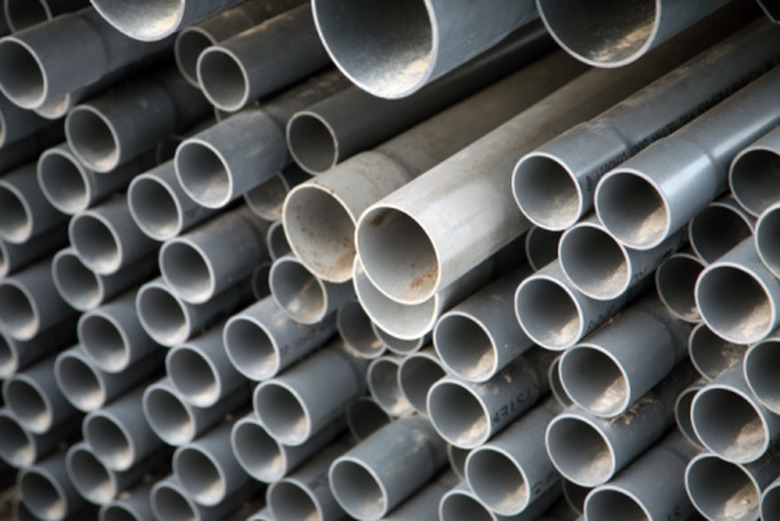3 Methods For Cutting A PVC Pipe Lengthwise
We may receive a commission on purchases made from links.
You might want to cut a PVC pipe lengthwise to provide a trough for a hydroponics operation, or perhaps you're looking for a way to cap off the top edge of a wood fence. Because it's so smooth, durable, and workable, PVC lends itself well to purposes such as these and others, but doing the actual cut takes careful preparation because the last thing you want is to have a pipe slip when you're running it through a stationary saw.
The choice of saws is an important consideration. It's possible to cut PVC in half with a table saw, but there are two problems: kickback and the thickness of the saw blade, or kerf. A typical table saw blade shaves off 1/8 inch of material, which is a lot to lose if you're cutting small-diameter pipe. A band saw blade has a smaller kerf, and it eliminates the danger of kickback, so if you have one, a band saw is the saw to use.
Method 1: Build a Jig
Method 1: Build a Jig
You can build a simple jig to hold the pipe out of scrap plywood, medium-density fiberboard, or even particleboard. Measure the pipe diameter and rip a length of material the same length as the pipe or longer with a width equal to the pipe diameter. Rip two more lengths equal to the pipe diameter plus the thickness of the material and screw them to the first one to make an open-ended box for the pipe. Use screws that are just long enough to bite into the bottom piece by a quarter to a half inch to prevent them from contacting the saw blade.
Stabilize the pipe by driving a single screw through the end of one of the side walls into the pipe and then feed the jig — pipe and all — through the blade. Stop when you're a little more than halfway through the cut, flip the pipe lengthwise, and feed the same end of the jig through the blade. This prevents you from cutting the jig in half along with the pipe.
Method 2: Glue the Pipe to a Piece of Wood
Method 2: Glue the Pipe to a Piece of Wood
An even easier method to stabilize the pipe — and one that doesn't involve screws — is to glue the pipe to a length of 2x4 lumber with hot-melt glue. Once the glue has set, adjust the wood against the saw fence so the blade bisects the pipe and then push on the wood to feed the pipe through the blade.
When the cut is completed, you can dissolve the glue with hair spray. Spray it liberally along the length of the pipe and then use a putty knife or flat-head screwdriver to pry the pipe free of the wood. Spray the glue residue on the pipe with more hair spray to soften it and then pull it off. Hot-melt glue is rubbery and should come off without the need for scraping.
Method 3: Use a Rotary Tool
Method 3: Use a Rotary Tool
If you aren't concerned about getting straight edges, you can also cut PVC pipe in half lengthwise using a rotary tool with a circular wood-cutting blade attachment. You'll need to clamp the pipe to a work surface to stabilize it, and you'll have to make two cuts: one along one side of the pipe and one along the other.
To facilitate this, it's best to use a pipe slightly longer than what you need so you can keep the ends clamped until you cut both sides. When both cuts are complete, release the clamps and cut off both ends of the pipe with a hacksaw.
